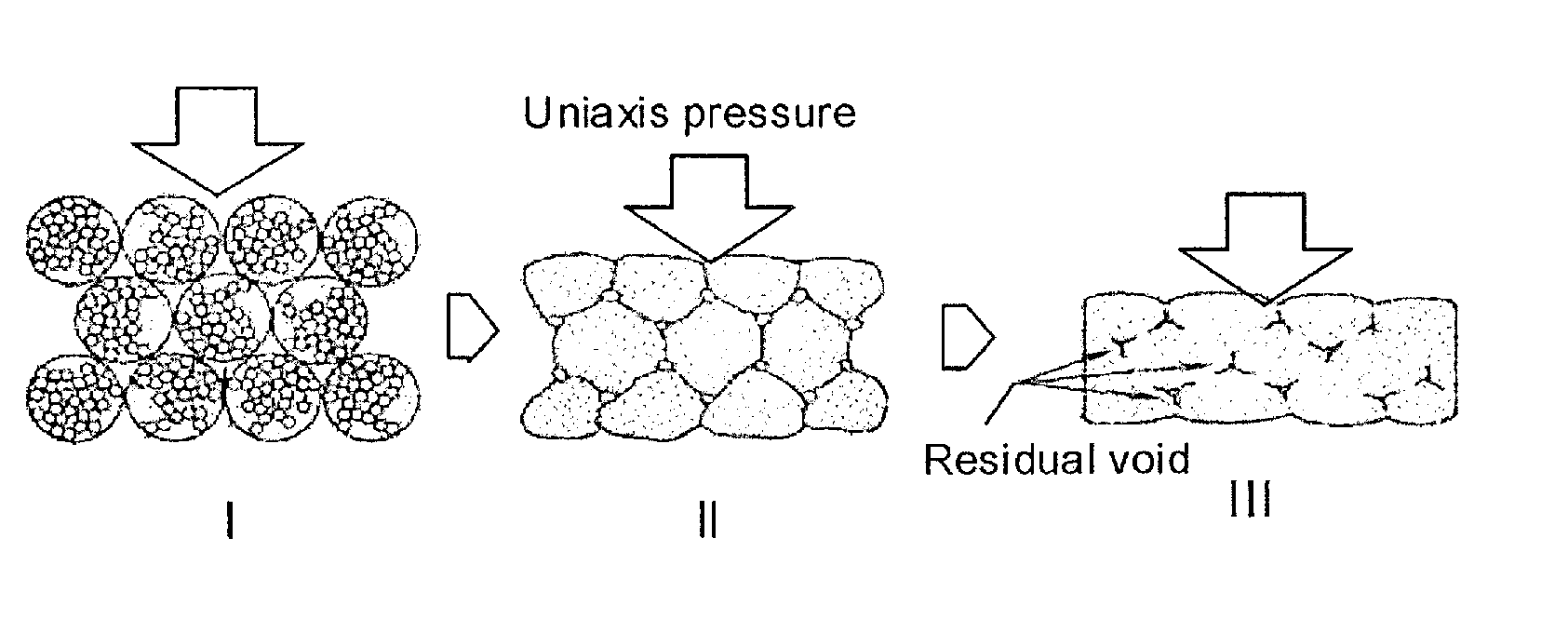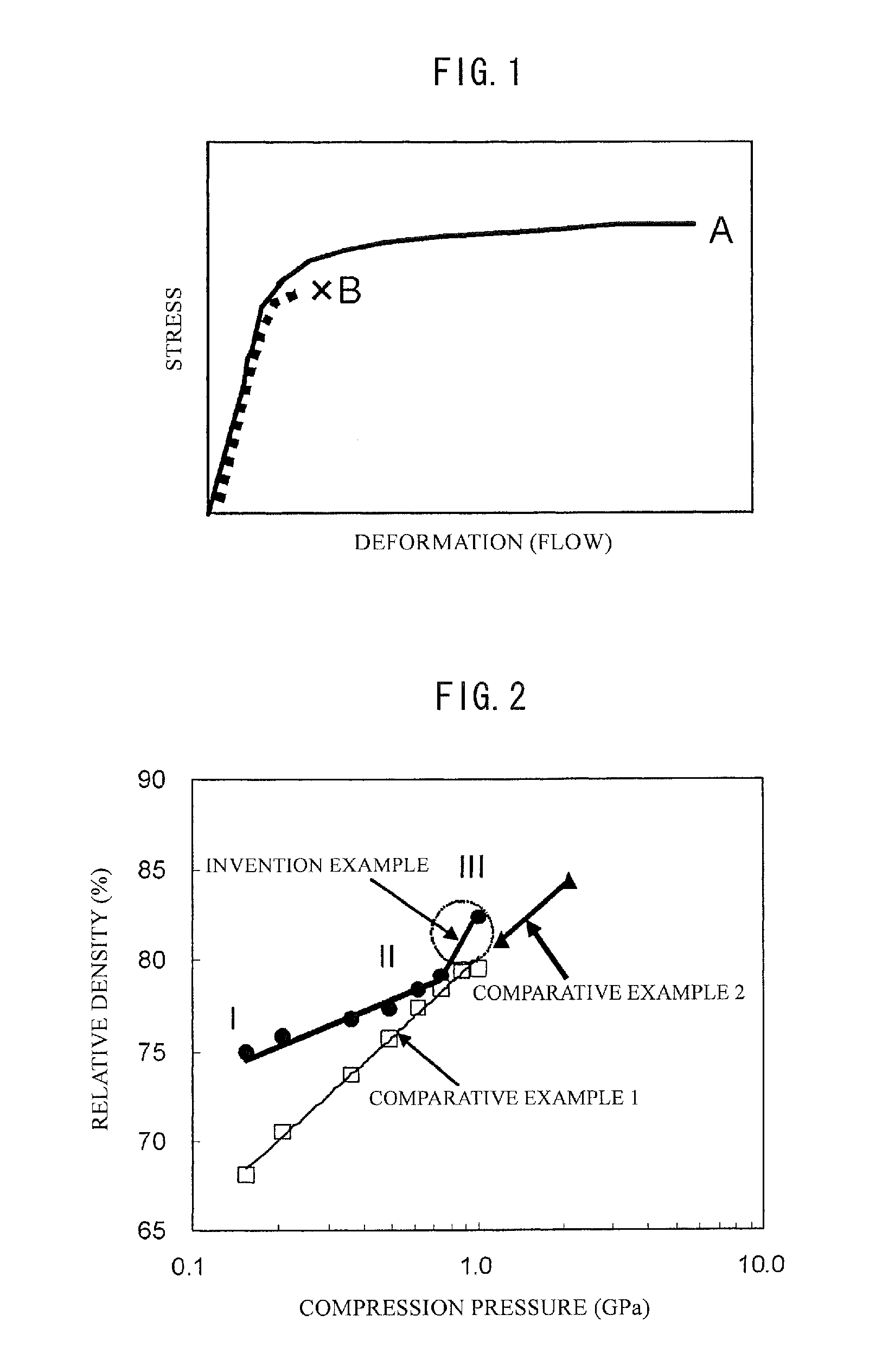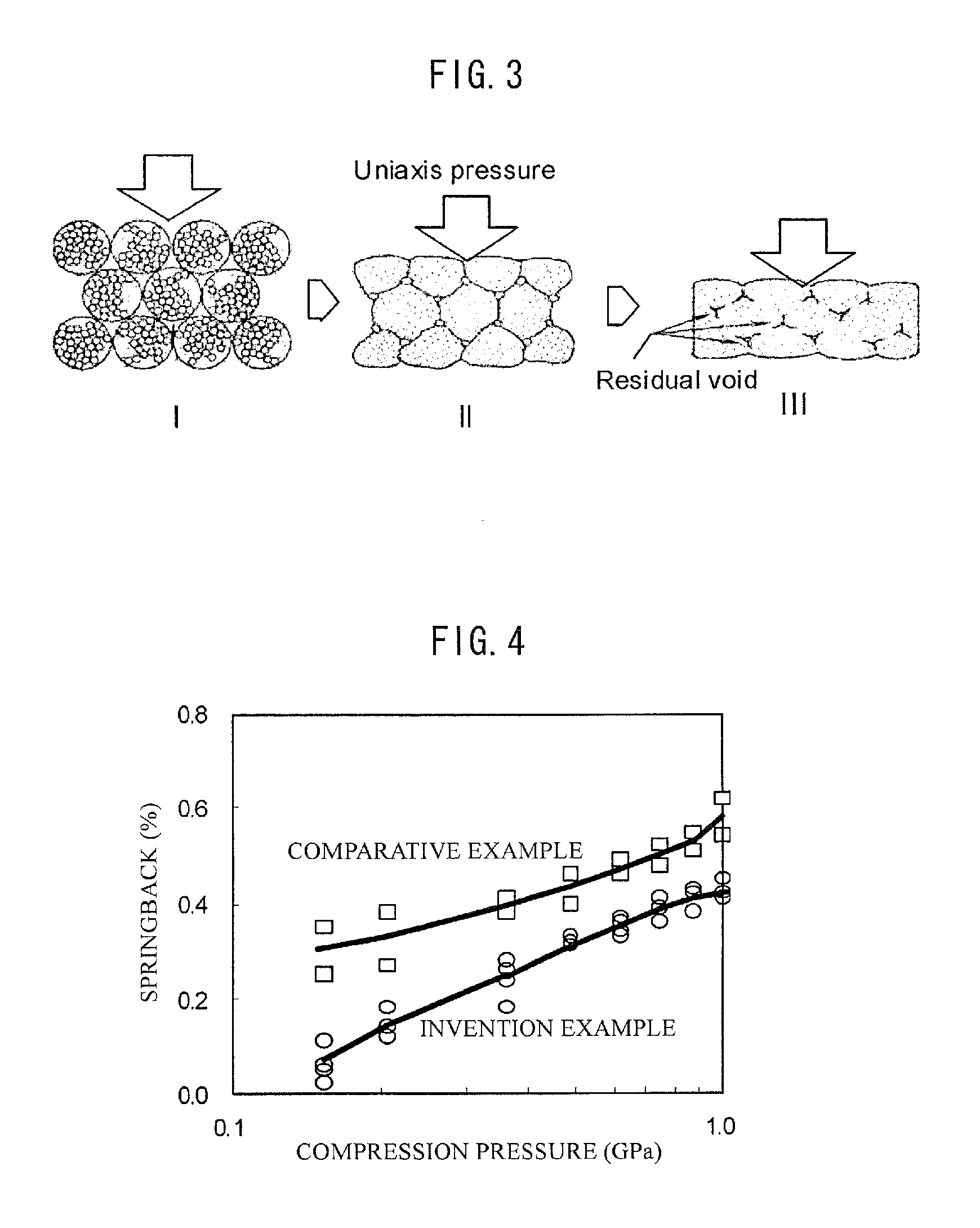Method for producing fully dense rare earth-iron-based bonded magnet
a rare earth-iron-based, magnet-based technology, applied in the direction of magnets, magnetic materials, magnetic bodies, etc., can solve the problems of oxidation and corrosion, inability to fill in residual voids uniformly and completely, and marked impairment of performance as magnets, etc., to suppress corrosion and structural change, increase radial crushing strength, and high dimensional accuracy
- Summary
- Abstract
- Description
- Claims
- Application Information
AI Technical Summary
Benefits of technology
Problems solved by technology
Method used
Image
Examples
examples
[0090]Hereinafter, the present invention will be described in more detail by way of Examples. However, the present invention is not intended to be limited to these Examples.
[Preparation of Thermosetting Resin Composition]
[0091]In a reactor equipped with a stirrer, a discharge tube, a nitrogen gas inlet tube and a thermometer, 100 mol % of 1,4-butanediol and 40 mol % of dimethyl terephthalate were introduced. As catalysts, 0.02 mol % of titanic acid tetra-n-butoxide and 0.03 mol % of antimony trioxide relative to the total amount of the acid components (dimethyl phthalate and fumaric acid that will be described below) were introduced to the reactor. The internal temperature was raised to 140° C., the temperature was further increased to 200° C. over 1.5 hours, and methanol was distilled to perform transesterification. Subsequently, the internal temperature was lowered to 160° C., and 60 mol % of fumaric acid and 150 ppm of hydroquinone (feed amount [mass] ratio with respect to fumari...
PUM
| Property | Measurement | Unit |
|---|---|---|
| volume fraction | aaaaa | aaaaa |
| volume fraction | aaaaa | aaaaa |
| volume fraction | aaaaa | aaaaa |
Abstract
Description
Claims
Application Information
 Login to View More
Login to View More - R&D
- Intellectual Property
- Life Sciences
- Materials
- Tech Scout
- Unparalleled Data Quality
- Higher Quality Content
- 60% Fewer Hallucinations
Browse by: Latest US Patents, China's latest patents, Technical Efficacy Thesaurus, Application Domain, Technology Topic, Popular Technical Reports.
© 2025 PatSnap. All rights reserved.Legal|Privacy policy|Modern Slavery Act Transparency Statement|Sitemap|About US| Contact US: help@patsnap.com



